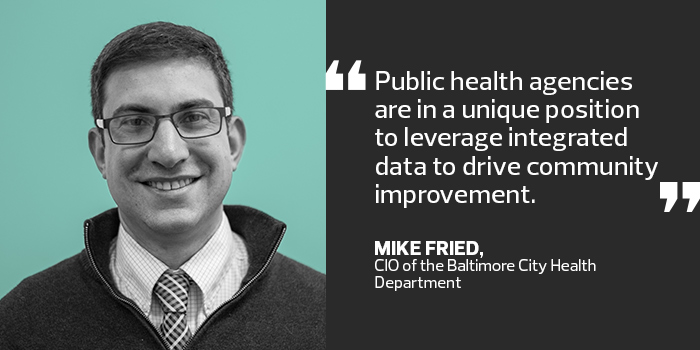How Public Health Agencies Can Leverage Data to Improve Community Health
The national push to increase electronic health record adoption by healthcare providers has made data increasingly available to inform public health decisions. Access to both reliable and expedient information shared between partners enables disease surveillance, contact tracing, emergency response, home visits, chronic disease interventions and other core functions. This data adds clarity to existing interventions, automates back-office functions and enables advanced analytics.
Still, much of the focus on healthcare recently has shifted to encompass more than just clinical interactions. As reimbursement models arc toward value-based care, provider organizations are looking at upstream factors to incorporate the social determinants of health into their clinical workflow.
Public health agencies are in a unique position to leverage integrated data to drive community improvement. However, doing so will require an updated approach, an embrace of innovation and the formation of partnerships that can expand capacity.
The Road to Successful Expansion
A progressive commitment to technical infrastructure and new approaches to data analysis, integration, coordination and security are needed for expansion efforts to flourish.
Coordinated sharing of individual social needs, nonclinical assessments and resource matching are causing health departments to redefine their roles. Traditionally, information exchange in the context of public health serves to bolster and automate these departments’ core functions, such as lab reporting or alerting across a population.
 The pursuit of automation and integration for these public health functions should continue, and in most cases be accelerated. However, that alone is not enough. It is the duty of the local health authority to find ways to convene stakeholders to drive health outcomes.
The pursuit of automation and integration for these public health functions should continue, and in most cases be accelerated. However, that alone is not enough. It is the duty of the local health authority to find ways to convene stakeholders to drive health outcomes.
Health departments face many challenges on the road to modernizing their technology. The procurement process, for instance, is geared toward physical technology acquisition and limits iterative solution development. Infrastructure is often neglected and technology staff disjointed, spread throughout an agency (or several) to support specific grants.
What’s more, while current funding models incentivize program expansion, consideration for retroactive back-end improvements is minimal. Legacy systems with limited capabilities for integration persist, meaning data remains both inconsistent in format, as well as isolated.
4 New Tech Strategies to Consider
To be successful, public health departments must think about new approaches for managing technology. Among them:
1. Foster a culture of innovation. Add capacity by deploying programs that bring new participants to the table. The Baltimore City Health Department launched an initiative, TECHealth (Transforming Engineering for Civic Health), a first-of-its-kind civic innovation program that recruits students, developers, engineers, designers and other individuals from across the city to tackle specific challenges to public health issues.
2. Address the technology maturity of key partners. Consider the capabilities of collaborators as core parts of new funding requests. Many of those who serve vulnerable populations are lacking the necessary resources.
3. Bolster strategic partnerships. To achieve the technical depth needed to support integration requirements, form long-term collaborations with tech providers.
4. Advocate to funders. As grantors recognize the power of integrated data, programs that focus on cross-discipline collaboration are becoming more popular. Still, there must also be a complementary focus on community partner system maturity.









